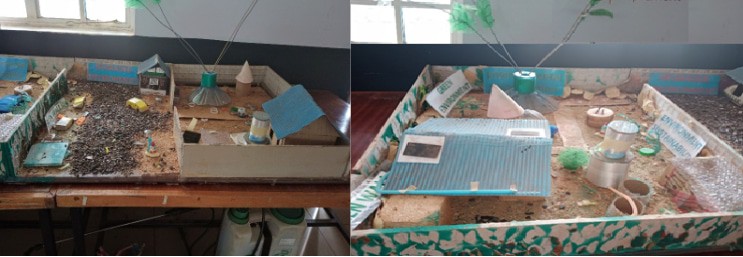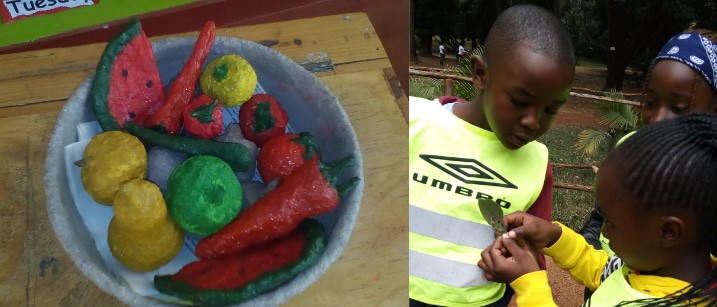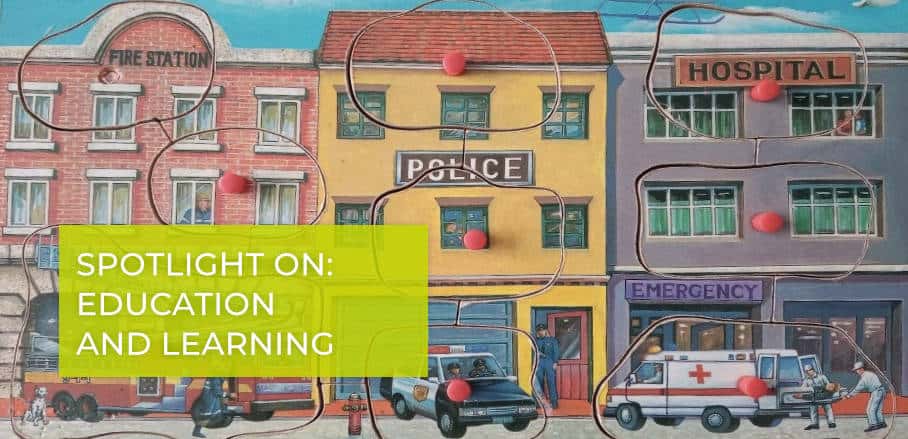A Sustainable Urban Future: The Role of Early Childhood Education
Playing is learning – and a way to teach young children the principles of sustainable urban development. The Toy Library Association of Kenya wants every child and every educational facility to have access to tools for playful education for sustainable development. By Lilian A. Oloo
Do you agree with Benjamin Franklin’s words; “tell me and I forget, teach me and I may remember, involve me and I learn?” The theory of experiential learning is often associated with young children’s best approach to learning. Cognitive, creative, emotional, physical, and social skills constitute holistic child development. This interconnection makes a child’s development and learning complex, yet these skills are vital for a child to thrive in this dynamic and uncertain world.
What is Education for Sustainable Development?
Early childhood is a critical period for young children because it sets the foundation for lifelong learning and wellbeing. Subsequently, early childhood education (ECE) shouldn’t be seen just as preparation for primary school. It targets a child’s holistic development, thus holding the possibility to nurture competent, caring, responsible, and resilient future citizens.
Education for Sustainable Development (ESD) in early childhood needs to be embedded into the curricula of early childhood education (ECE), since it prepares these young children to be problem solvers to current and future challenges that they may encounter. Adopting this approach into formal school curricula as well as into non-formal learning settings will ensure securing a sustainable future for our children. This calls for exposing them to all three pillars of sustainability: environmental, economic and social. Young children are also very well capable of refined thinking concerning matters affecting them. Therefore, they should not just be consumers of solutions sought for them, but also producers of solutions that impact them.
It is in early childhood that children form connections and relationships with parents, teachers, and the community at large. Likewise, their attention is naturally drawn to their environment and its amenities as they learn about the world around them. This gives them a perspective of life and of how systems work.

Children built a replica of a degraded environment and a “green wall” © TLA-KE
With this in mind, children are capable of redesigning and modelling desired environments based on their mental image and imagination. It is therefore not too early to introduce them to SDG11 on Sustainable Cities and Communities, which aims to “make cities and human settlements inclusive, safe, resilient and sustainable”.
Cities are highly susceptible to climate change. As young children are highly affected by environmental challenges, it is therefore important that they are involved in mitigating the effects of environmental degradation and in designing sustainable cities.
What is the Toy Library Concept?
Voce reminds us, it is a child’s ‘playful instinct to explore, manipulate and discover’. This calls for playful learning experiences! It is on this premise that the toy library concept builds its practice.
The toy library, an initiative of the Toy Library Association of Kenya (TLA-KE), is a high-impact, cost-effective, non-centre-based programme that gives children, families, ECD practitioners, and early learning facilitators access to an assortment of cautiously selected educational play materials, play sessions, and training on how to use toys to advance development. The toy library concept is anchored on SDG4 to “ensure inclusive and equitable quality education and promote lifelong learning opportunities for all”.
With no early years’ curriculum in Kenya, most day care centres and playgroups are mere babysitting hubs, not providing quality early learning opportunities. Millions of young children are therefore missing out on the critical window of opportunity when their neural connections are being formed, and they are more receptive to learning. This is where toy libraries come in.
TLA-KE was piloted in Kibera, Nairobi, with a vision to have a toy library within the reach of every child. The toy library provides space for “come and play” sessions, offers educational resources required for playgroups and supports under-resourced ECD centres.

Children improvise and make play materials from waste for sustainable play. They also explore nature and practice sustainable farming, which they replicate in their limited spaces at home. © TLA-KE
The programme has positively impacted children through the “come and play” programme and parents, ECD practitioners, and teachers through capacity building. Improved learning outcomes, as well as better parenting and teaching approaches, have been reported during our engagement. Notably, it has catered to the needs of children born with challenges or into a challenging environment, and those at risk of deprivation, who need support in order to recover and get back on track. Research reveals that if children at risk are given care and support in their early life, these interventions can reverse the effects of deprivation and stimulate the development of their innate potential. The toy library concept is one such support system.
Why is Early Learning So Important?
While the home provides the first learning space for a child, early learning programmes set the foundation for a child’s lifelong learning, and children who have access to high-quality early learning programmes particularly develop competencies in social skills, fine and gross motor development, and early literacy, to mention a few. The toy library provides rich spaces and materials for high-quality early learning programmes. With emerging issues and global trends in pedagogy, the toy library concept incorporates STEAM education and SDGs in its practice.
What better way to implement education for sustainable development than through play and fun activities, through which children learn best?
- A Sustainable Urban Future: The Role of Early Childhood Education - 11. January 2022
